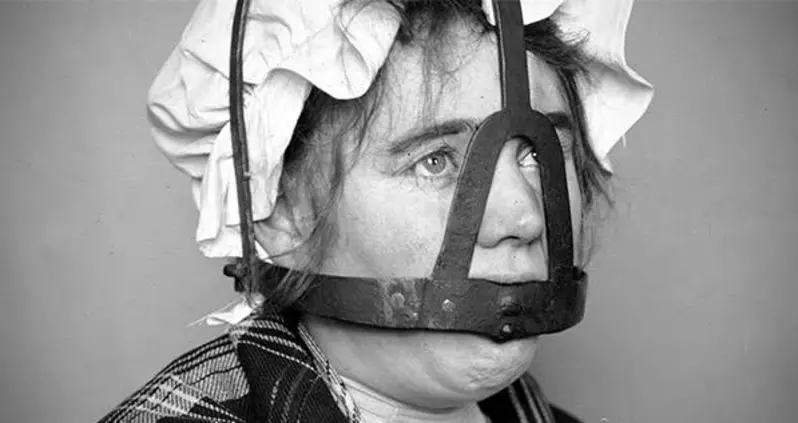By Vernon Meigs

I want to talk for a brief moment about a song that’s a childhood favorite of mine entitled “He Walks Like a Man” as performed by country music singer Jody Miller. The lyrics, written by Diane Hilderbrand, are what I want to look into in particular. Take a moment and read the lyrics, or better yet, listen to the song if you have access to it, but again pay attention to the lyrics.
These lyrics, which I have heard are written by Hilderbrand for Jody Miller for her husband Monty Brooks (although I have no solid sources on that), are sung from Jody’s perspective about the qualities of her man in the verses, with some descriptions surprisingly flattering and beyond the utilitarian clichés, such as “He schemes like a man and whenever he can, he dreams like a man”. Each of these verses is closed with what can be described as a light chorus: “But it’s the little boy; It’s the little boy in him I love”. A bridge within the song speaks of how there is a little boy in every man, and how the little boy shines through every now and then.
An eloquent and simple song which is to this day a favorite of mine. In recent years however I’ve come to appreciate the fact that lyrically it has a different take on depicting through words a woman’s love for her man. We have had our share of songs from plenty of genres describing a woman’s love for a man one way or another, thematically from how supportive and caring their men are, how lovable they are despite their “flaws”, or even more direct songs about “making love”.
However, I think this 1964 hit has a unique take on it that I can’t quite find offhand on other female-driven songs. Off the top of my head, it is the only song I can think of that is about loving a man for being himself. I’m not talking about the “be yourself” advice given to men that are struggling with social situations which is not nuanced or enough or truly meaningful in itself. What I mean about loving a man for being himself is valuing a man as an individual in himself.
My Introduction to the Puer Concept
One thing I’ve come to realize in recent years is what is intrinsic to an individual, that is, the importance of the inner boy in the man, and likewise the inner girl in the woman. What I mean by inner boy and girl, specifically, is the Jungian concepts of puer and puella. To stay on subject with this article I will place focus on the puer, the inner boy. It should be worth noting that “puer” is, in fact, Latin for “boy”. I want to make an immediate distinction of context here to avoid confusion: the puer concept, at least in the positive context I hope to exposit on, is distinct from what is referred to as the child archetype in human adult relations in which one assumes the role of child, and the other as the adult with hyperagency, resulting in a situation where the adult child parasites off of the one assuming the adult role through vulnerability and victimhood. The puer archetype, usually symbolised as a boy, represents spontaneity; and the child archetype, symbolised as an infant, represents helplessness.
Psychologists directly speaking about the puer also can be rather uncharitable in their exposition of it, especially when they cynically associate it with Peter Pan Syndrome…and dismiss it simply as a “failure to launch”. However, I think there needs to be a focus on puer as a highlight of the inner, unabashed boy that embodies everything that is honest, energetic, pure, innocent and enthusiastic. The childlikeness of earnest joy and uncorrupted excitement, and not the childishness of the petulant brat. The awe-inspiring innocence of wonder, wishes, and curiosity, not the stupid innocence of naiveté and ignorance.
I want to credit Peter Wright of Gynocentrism.com for convincing me of this distinction. Whereas I previously broadly used the “inner child” concept to speak largely of the positive aspects of the child to serve as youthful energy for the kind of grown men that spend time tinkering their automobiles and organizing their various collections, I largely glossed over the destructive aspect of the “inner child” in its manipulative, petulant context. Peter had helped me make more of a contextual distinction between the two and introduced me to the puer and puella concepts.
“He Walks Like a Man”, in my mind, speaks to the puer of Jody Miller’s man. The little boy in him is not an infant that pines for his mother’s care. The little boy in him is not a petulant whiner that goes into a tantrum when he doesn’t get his way. If he was in any way these things, the song’s lyrics of how admirable the man is *as* a man will not ring true. Note that in the bridge she mentions that the little boy comes shining through when his man is “happy or blue”. The little boy is the honest, unsacrificed self of a man, encased in the tough exterior that he’s adopted to function as an adult. When the little boy shines through, it should be a joyful encounter of meeting the honest self of a man with his dreams still intact, his wonder unscathed by cynicism, and a lust for life and all the world has to offer. And dare I even say, far from this being the woman’s maternal type of love for this little boy, perhaps it is the inner girl in the woman, the puella, that responds to and loves the little boy in him, the puer.
Cancelling the Inner Boy
I would have spoken about the following subject way earlier but I had been busy scripting up and recording my ICMI20 talk which needed particular attention, and I needed a break afterwards. So although some time has settled since, let’s talk briefly about that silly Tomi Lahren rant about how men are trash.
In her rant she specifically states in a snide voice that feigns wit: “This is a PSA for all the men out there, and all the boys who think they’re men, but they’re actually boys. This is gonna be the summer of canceling boys.” She proceeds to admonish men at large for not living up to what are no doubt asinine expectations for men that she and “her friends” imply to uphold. Everything about her rant exposes the shifting of blame upon all men where in fact there had been no self-reflection in which she can find blame in herself for anything that goes wrong in her relationships with men. It is greatly ironic that we find this brattish quasi-valley-girl woman-child with big sunglasses on her head talking about how men are not real men but are instead boys.
Everything about Lahren, coming across as petulant as any princess, reveals something most may overlook: this is perhaps not so much about her having an ideal man. Ideal men no doubt have come and gone from her life with her being the dismissing agent. It is my understanding she broke off an engagement that came with an obscenely priced diamond ring. No, her real issue is that she hates the inner boy within the man. It is hinted early on that she claims to berate men who are actually boys, and want to cancel said boys. I know what some might think: “Well, wasn’t Tomi just talking about the petulant sort of men who are irresponsible and giving her and her friends a hard time?” Judging by the fact that men who are “responsible” and relatively “real mannish” to a fault have surrounded and have been rejected by Lahren suggests that no, that is not the sort of boy she is in fact talking about. She can only be talking about the alternative, that is, men with youthful energy and won’t break themselves sacrificially to gynocentric society. Why else would she go on a rant? This whole affair comes across as sour grapes from freaking out over “where have the good men gone!” as if she’d just been dumped.
Tomi Lahren paradoxically assumes both the role of a woman who wants a perfect, ideal man that does everything for her, and also the role of an over-controlling mother treating her man like the very “boy” she wants to cancel. She wants a hulk or drone of a man that can make her life as effortless as possible with his puer, that is, his youthful exuberance and positive childlike qualities completely gutted with sheer contempt. At the same time, she treats men like children with a sadistic maternalism that says “if Mommy ain’t happy, ain’t nobody happy”. In her rant, Tomi Lahren assumes roles of both self-victimizing woman-child and authoritarian mother. In both capacities, she mongers war upon the puer.
Lahren doesn’t stand out for this uniquely; really, she is just the latest in the line of women embracing “whataboutmeism”, that gynocentric demand of male altruism, to the point that they can’t bear the existence of the independent puer that wants to pursue his own goals instead of giving his valuable time to the beck and call of entitled women like her. But it should be a wake up call for people who latch onto people like Lahren just for saying they aren’t a feminist. The time is long past to recognize that it is not enough. As long as men are valued for only their utility, disposable or otherwise, and not for their own sake as individuals and what they are deep inside manifested in their puer, this gynocentric disdain on the little boy within men will persist.
Discovering Puer and Puella, and the Case for Embracing Them
Here I spoke about two vast contrasts: One – a song in which Jody Miller expresses a true love and appreciation for the puer, the inner boy inside his man, for it is the essence of this man; Two – a rant in which Tomi Lahren admonishes men at large as “boys” as well as expressing hostility to the very idea of a man being in touch with his inner boy, implicitly waging war against the puer.
The enthusiastic context of inner child is something that I’d appreciated for some time, and is not truly new to me. The puer, as distinct from the child archetype, is however certainly new to me. I think that this can serve as a new proper context for me to discern the things in everyday life, be it in interactions with others to things observable in media, to discern what is in embrace of the puer as well as the puella, and what intends to destroy them.
There is certainly more to discover and write about on my part when it comes to these inner children of wonder within us. All this thus far is but an introduction. But if the puer is the childlike source of unfiltered energy of innocence and dreams, maybe embracing that aspect of oneself is the key to bring them back onto their own two feet if ever they are in a situation that they have to.
Any time you see a man excited about immersing themselves in their chosen activity, be it a car, his art and craft, his study, his stage performance, and even with relationships such as among his brothers or his intimate partner, you’re seeing his puer aspect. You’re seeing the little boy shining through. When a man is broken and his life reduced to drudgery, his puer is either dead or dying. Perhaps a case can be made for embracing our puer, resuscitate it if necessary, and discover that within ourselves and in others we encounter in our lives and value.
[Lyrics referenced in this essay:]
Hildebrand, Diane. “He Walks Like a Man” Queen of the House, by Jody Miller. Capitol Music. 1964


